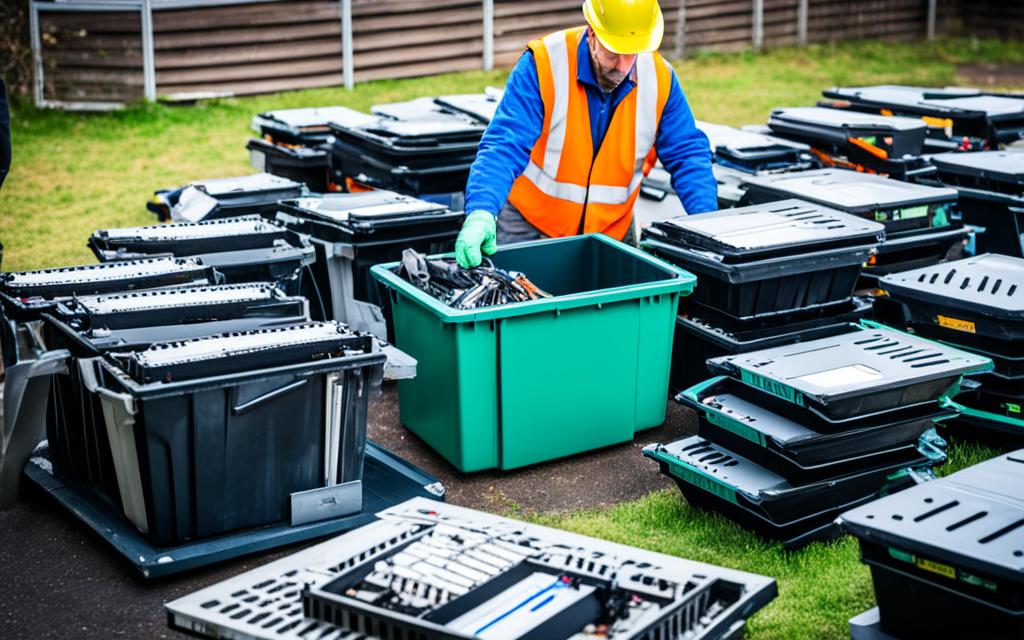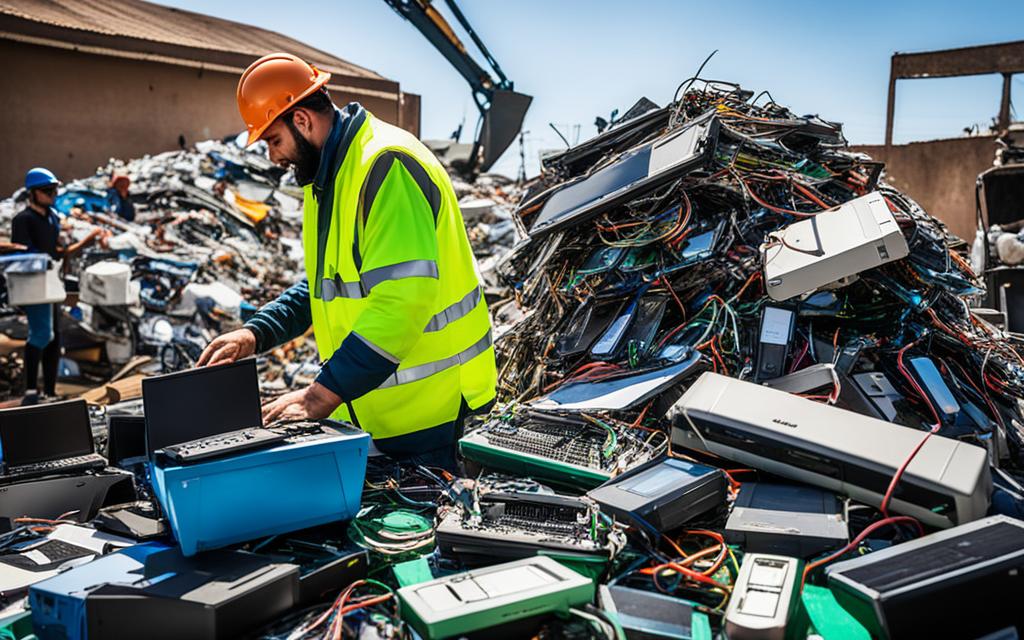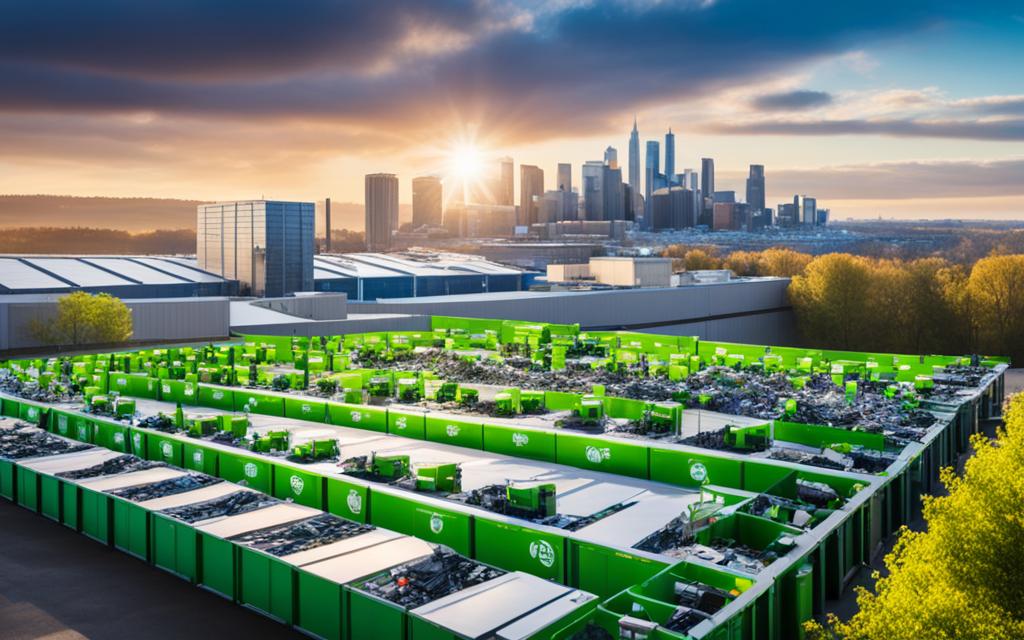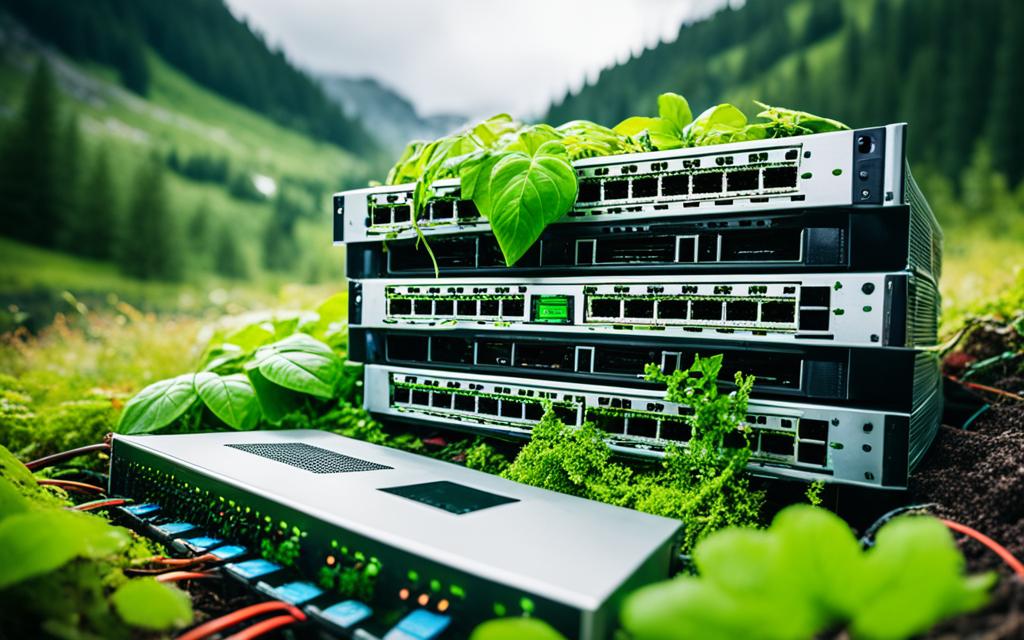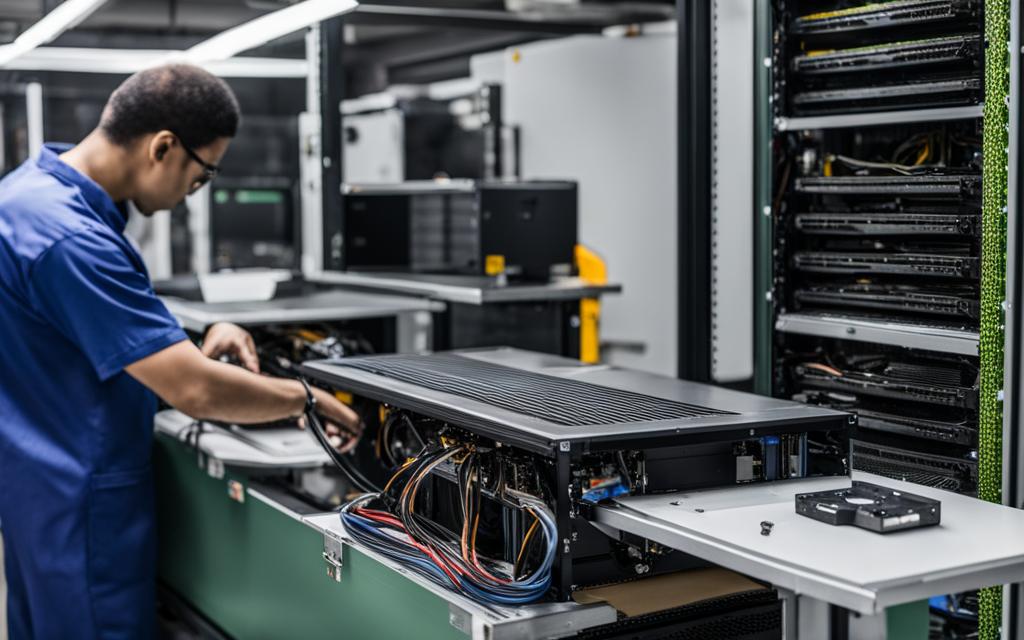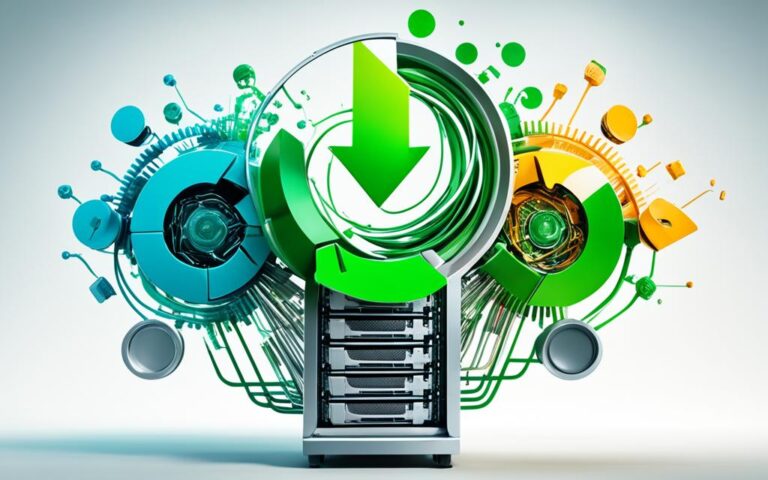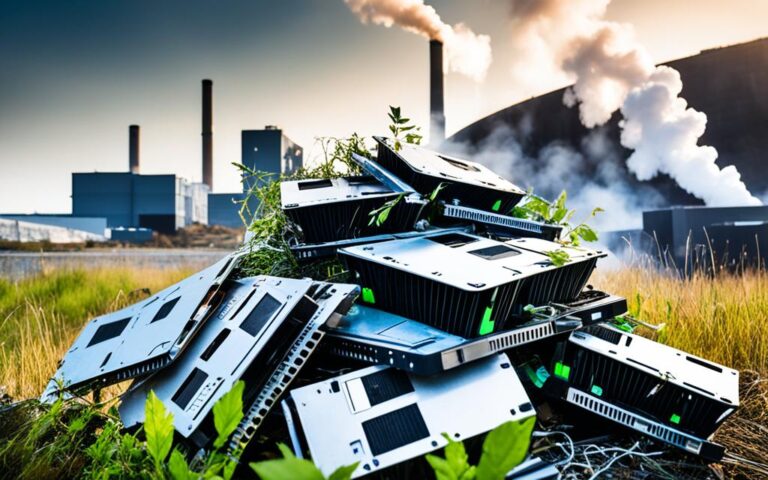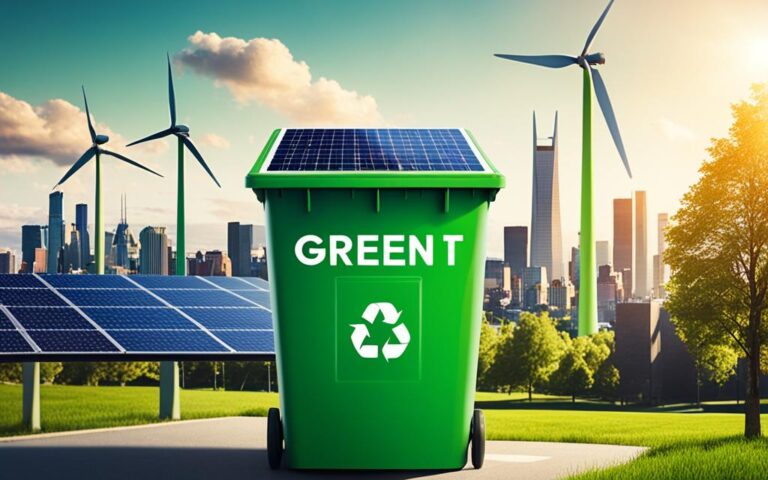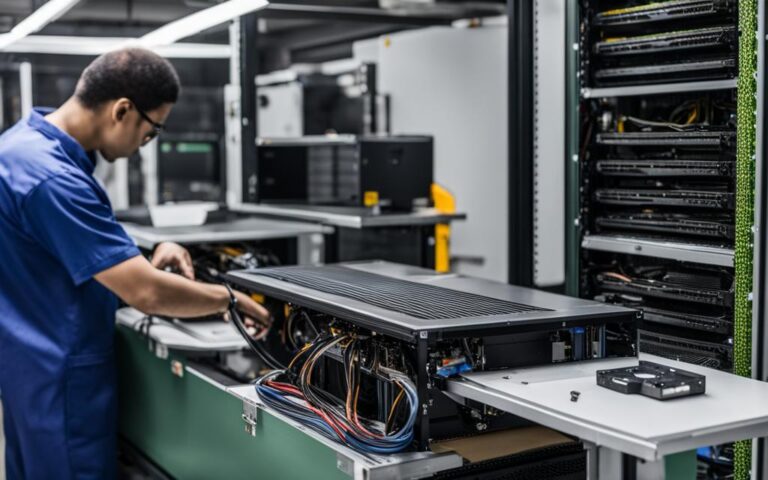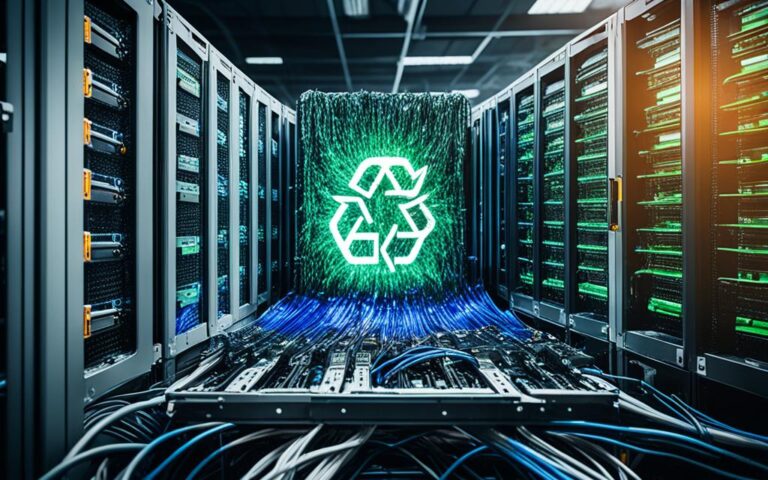The Role of Server Recycling in Promoting Digital Responsibility
Server recycling plays a crucial role in promoting digital responsibility servers and fostering a sustainable tech ecosystem for a greener future. By responsibly refurbishing, reusing, and recycling donated technologies, organizations can increase access to affordable technology, bridge the digital divide, and manage e-waste sustainably.
This article will explore the importance of server recycling in promoting digital responsibility, addressing the digital divide, and protecting the environment from the harmful effects of e-waste. Through server recycling, we can pave the way for a greener future and a more responsible digital landscape.
Understanding the Digital Divide
The digital divide is a significant issue that arises from the unequal access to technology and the internet, resulting in hindrances to economic productivity and exacerbation of social injustices. Not everyone has equal opportunities to access technology, which in turn affects areas such as education, employment, and social connectivity. Bridging the digital divide is crucial to ensure equal opportunities and digital inclusion for all individuals.
By promoting server recycling and facilitating affordable access to technology, organizations can actively contribute to bridging this divide and creating a more inclusive digital society. By refurbishing and reusing donated technologies, these organizations can make technology more accessible and affordable for underserved communities.
Technology Access for Equal Opportunities
Access to technology is crucial for individuals to thrive in today’s digital age. It is not just a matter of convenience; it directly impacts education, job prospects, and social connections. For instance, without equal access to technology, students from disadvantaged backgrounds may struggle to keep up with their peers who have better access to online educational resources. Additionally, job opportunities increasingly require digital skills, so limited access to technology can hinder employability.
By promoting server recycling and ensuring affordable technology access, organizations can help level the playing field. Through initiatives that provide refurbished devices or affordable technology options, underserved communities can gain equal access to digital resources and opportunities. This, in turn, enables individuals to pursue education, enhance their employability, and connect with others in an increasingly digital world.
| Impacts of the Digital Divide | Solutions |
|---|---|
|
|
Impact of E-Waste on the Environment
E-waste, which includes computers, cell phones, and printers, is a rapidly growing waste stream worldwide. The improper disposal of e-waste has severe environmental consequences, such as soil contamination, water pollution, air pollution, resource depletion, and increased energy consumption.
When electronic waste is not recycled responsibly, it poses significant risks to our planet’s health. Toxic substances from e-waste can seep into the soil, contaminating water sources and harming ecosystems. Additionally, burning e-waste releases harmful pollutants into the air, contributing to air pollution and climate change.
The impact of e-waste goes beyond immediate environmental concerns. The resources used to manufacture electronic devices, such as raw materials and energy, are often extracted unsustainably. Electronic waste recycling plays a critical role in reducing the demand for new devices and conserving natural resources.
By choosing IT recycling and responsibly managing e-waste, we can mitigate the environmental impact of electronic waste. Recycling electronics allows valuable materials to be reused, reducing the need for new production and preserving resources. It also helps to minimize the release of toxic substances, protecting both our environment and human health.
“Electronic waste recycling is crucial for sustainable waste management and preventing these environmental impacts.”
The Importance of Electronic Waste Recycling
The significance of electronic waste recycling cannot be overstated. It is a fundamental aspect of sustainable waste management and environmental stewardship. This process ensures that electronic devices are disassembled, and their components are properly recycled or disposed of in an environmentally friendly manner.
Electronic waste recycling not only helps reduce pollution and conserve resources but also brings economic benefits. Recovering valuable materials from e-waste can contribute to the creation of a circular economy, where resources are reused instead of being discarded.
Moreover, responsible e-waste recycling helps limit the number of electronic devices ending up in landfills, where they can leach harmful substances into the soil and water. Additionally, by recycling electronic waste, we can reduce the energy consumption associated with the manufacturing of new devices.
| Environmental Impacts of E-Waste | Solutions |
|---|---|
| Soil contamination | Responsible e-waste recycling and proper disposal |
| Water pollution | Preventive measures and recycling technologies |
| Air pollution | E-waste regulations and adopting cleaner recycling processes |
| Resource depletion | E-waste recycling to recover valuable materials |
| Increased energy consumption | Reducing the demand for new electronic devices through recycling |
Electronic waste recycling is a collective responsibility. As individuals, we can contribute by properly disposing of our old electronic devices and supporting certified recycling programs. Businesses and governments play a crucial role in implementing effective e-waste management systems and promoting sustainable practices.
Through responsible electronic waste recycling, we can protect the environment, conserve valuable resources, and minimize the negative impacts of e-waste on our planet. Together, we can create a more sustainable future for generations to come.
The Role of IT Recycling in Bridging the Digital Divide
IT recycling plays a vital role in bridging the digital divide by providing access to affordable technology. By refurbishing and reusing donated devices, IT recycling organizations can offer refurbished technology at lower prices, making it easier for underserved communities to gain access to technology. This increased access to affordable technology can have a transformative impact on individuals’ lives, enhancing educational outcomes, employment opportunities, and social connectivity.
Through IT recycling, individuals who previously faced barriers due to financial constraints can now afford the necessary tools to fully participate in the digital age. Access to affordable technology empowers individuals to acquire digital skills, explore educational opportunities online, and connect with others from across the globe. It opens doors to new employment prospects, enabling individuals to access remote work opportunities and expand their economic prospects.
Additionally, IT recycling contributes to sustainable waste management and environmental conservation. By diverting electronic devices from landfills, IT recycling helps reduce the strain on natural resources and minimizes the release of harmful substances into the environment. It is not just about the affordability of technology but also about protecting our planet for future generations.
Transforming Lives Through Affordable Technology
When IT recycling organizations refurbish and offer affordable technology, they are not just providing a device; they are empowering individuals and communities. Affordable technology enables students to access educational resources, bridging the educational divide and leveling the playing field. It empowers entrepreneurs and small business owners to harness the power of technology to expand their businesses and reach new customers. It allows individuals to connect with loved ones, fostering social connectivity and reducing isolation.
According to the Pew Research Center, bridging the digital divide is crucial for low-income individuals and communities to have equal opportunities for learning, employment, and social participation.
In bridging the digital divide through IT recycling, we create a more inclusive society where everyone has the chance to thrive and succeed. By bringing affordable technology to underserved communities, we break down barriers and create equal opportunities, ensuring that no one is left behind in the fast-paced digital world.
Managing E-Waste Sustainably
The benefits of IT recycling go beyond providing access to affordable technology. It also plays a crucial role in managing e-waste sustainably. Electronic waste, when improperly disposed of, poses significant threats to the environment and human health. By recycling electronic devices, IT recycling organizations prevent these hazards and help conserve natural resources.
Every year, approximately 50 million metric tons of electronic waste are generated globally, highlighting the need for responsible e-waste management.
With the rapid advancement of technology, the rate of electronic waste generation continues to escalate. By choosing IT recycling, we actively contribute to reducing this waste stream and protecting the environment. Through proper recycling processes, valuable materials can be recovered and repurposed, reducing the need for new electronic products and the extraction of precious resources.
The role of IT recycling in bridging the digital divide cannot be overstated. Not only does it provide access to affordable technology, but it also fosters sustainable waste management practices, minimizing the negative impact of electronic waste on our planet. By embracing IT recycling, we can create a more inclusive, connected, and environmentally responsible digital landscape.
Circular Electronics for Social Good
Circular electronics is an innovative approach that champions social good and sustainable consumption through the reuse and repair of used electronics. By extending the lifespan of these devices, circular electronics contributes to the reduction of electronic waste and fosters a more environmentally conscious tech ecosystem.
One of the primary goals of circular electronics is to provide affordable technology access to underserved communities, thereby promoting digital inclusion and bridging the digital divide. By refurbishing and repurposing IT equipment, businesses can contribute to a more equitable society by ensuring that technology is accessible to all.
Adopting circular electronics not only has a positive impact on the environment but also addresses pressing global challenges such as environmental degradation and climate change. By reducing the demand for new electronic products, circular electronics helps conserve natural resources and minimize the release of harmful substances into the environment.
“Circular electronics has the potential to reshape our consumption patterns, create social value, and open up equal opportunities for all.”
This approach doesn’t just benefit the environment; it also creates social value. By providing access to affordable technology, circular electronics empowers individuals and communities, enabling them to participate fully in the digital age. This fosters equal opportunities in education, employment, and social connectivity.
Benefits of Circular Electronics
- Reduction of electronic waste
- Conservation of natural resources
- Increased access to affordable technology
- Promotion of digital inclusion and equal opportunities
- Contribution to a more sustainable and environmentally friendly future
| Benefit | Description |
|---|---|
| Reduction of electronic waste | Circular electronics extends the lifespan of used devices, reducing the amount of e-waste generated. |
| Conservation of natural resources | By reusing and repurposing electronics, circular electronics helps conserve valuable resources used in the production of new devices. |
| Increased access to affordable technology | Circular electronics makes technology more accessible by offering refurbished devices at lower prices. |
| Promotion of digital inclusion and equal opportunities | Circular electronics bridges the digital divide by providing technology access to underserved communities, ensuring equal opportunities for all. |
| Contribution to a more sustainable and environmentally friendly future | Adopting circular electronics practices contributes to a greener future by reducing e-waste and promoting sustainable consumption. |
Conclusion
Embracing digital responsibility and promoting server recycling is essential for creating a more sustainable tech ecosystem and a greener future. By bridging the digital divide, managing e-waste sustainably, and promoting circular electronics, organizations can ensure equal opportunities for all, protect the environment from the harmful effects of e-waste, and contribute to a more equitable and environmentally friendly society.
It is crucial for businesses, governments, and civil society organizations to collaborate in promoting digital responsibility and incorporating sustainable practices into their digital strategies. Server recycling is a key component of this effort, fostering a sustainable tech ecosystem that benefits both individuals and the planet. Through server recycling, we can pave the way for a greener future and a more responsible digital landscape.
To learn more about server recycling in the UK, visit server recycling uk.
FAQ
What is the role of server recycling in promoting digital responsibility?
Server recycling plays a crucial role in promoting digital responsibility by responsibly refurbishing, reusing, and recycling donated technologies. This helps increase access to affordable technology, bridge the digital divide, and manage e-waste sustainably.
What is the digital divide?
The digital divide refers to the inequalities in accessing technology and the internet, which hinder economic productivity and exacerbate social injustices. Not everyone has equal access to technology, which affects areas such as education, employment, and social connectivity.
How does electronic waste recycling impact the environment?
Improper disposal of e-waste leads to environmental hazards, including soil contamination, water pollution, air pollution, resource depletion, and increased energy consumption. Electronic waste recycling is crucial for sustainable waste management and preventing these environmental impacts.
How does IT recycling help bridge the digital divide?
IT recycling plays a vital role in bridging the digital divide by providing access to affordable technology. By refurbishing and reusing donated devices, IT recycling organizations can offer refurbished technology at lower prices, making it easier for underserved communities to gain access to technology.
What is circular electronics?
Circular electronics is an approach that focuses on reusing and repairing used electronics to provide affordable technology access to underserved communities. This model aims to reduce electronic waste, promote sustainable consumption, and increase digital inclusion.
Why is digital responsibility important?
Embracing digital responsibility and promoting server recycling is essential for creating a more sustainable tech ecosystem and a greener future. It ensures equal opportunities for all, protects the environment from the harmful effects of e-waste, and contributes to a more equitable and environmentally friendly society.

